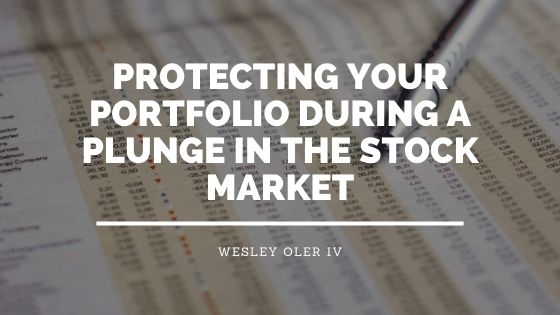The stock market is always fluctuating, and not always for the better. While it’s great to see the stock market go up, being involved in investing means you’re aware there will be times the market takes a plunge as well. That doesn’t mean you should sell your investments when things take a turn for the worse—rather, it just means you should be aware of their movements and what you’re willing to lose. You don’t have to sit idly and hope for the best, either. It’s impossible to avoid risk entirely when playing the investment game, but there are strategies that can help you protect your portfolio to the best of your ability.
Diversification
Diversification is a strategy that mixes various investments within a portfolio, all of which have distinct asset types and investment vehicles. This limits the exposure to any single asset or risk in your portfolio. Diversifying your portfolio will theoretically yield higher long-term results and lower the risk of individual holdings or security. During a market downturn, a well-diversified portfolio will outperform a concentrated one. To eliminate most, if not all, unsystematic risk to your portfolio, include 12, 18, or even 30 stocks within it.
Stop Losses
Another way to protect your portfolio is to issue a stop-loss order. These are orders placed with a broker to buy or sell a specific stock at a certain price. It limits the investor’s loss on a security position; if you place a stop-loss order for $15, for example, your shares will be sold at the market price once the stock drops below $15. Those in favor of stop-loss orders argue that they protect you from rapidly changing markets, while those against stop-loss orders say that all types of stops will turn temporary losses into permanent ones. This is why you should plan these orders well if you choose to place one.
Dividends
One of the more uncommon methods of protection is investing in dividend-paying stocks. Dividends account for a significant portion of a stock’s return; sometimes, it can be the entire amount of a total return. It’s proven that companies that pay dividends deliver above-average returns; in addition to investment income, companies that pay dividends generally grow their earnings faster than those who don’t. Those who grow faster earn higher share prices, which then generates higher capital gains. This protects your portfolio by increasing the amount of your overall return. When the market takes a downturn, dividends provide a cushion that usually results in lower volatility. They also act as a good hedge against inflation.
Companies that both pay dividends and possess pricing power will protect your portfolio in ways that fixed-income investments can’t match. Investing in “dividend aristocrats,” or companies that have been increasing dividends for 25 consecutive years, provides you with further protection since you can be certain you’ll get a payout from these companies.
